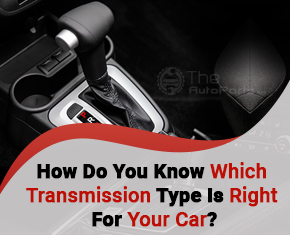When you begin searching for a new vehicle, the dealer will ask whether you prefer an automatic or manual gearbox. While it is true that automatic transmissions are more recent than manual transmissions, each has advantages and disadvantages. As a consequence, some individuals prefer manual transmissions over automatic transmissions and vice versa.
Did you realize that your transmission has more going on within it than any other component in your car?
Modern car gearboxes distribute engine power to the driveshaft and wheels using a combination of sophisticated hydraulics and computer-controlled electrical components, and most modern drivers are blissfully oblivious to these complicated systems until something goes wrong.
Without even a doubt, your car’s transmission is the most sophisticated and least understood component in your car or truck, therefore it’s no surprise that transmission systems account for the bulk of automotive questions—and repair service calls.
Have you ever wondered what type of gearbox your automobile or truck has? If this is the case, you’re either in need of a transmission repair owing to transmission issues such as excessive engine revs and transmission sliding or you’re simply inquisitive about what’s going on beneath the hood.
Transmission system fundamentals: The many types of transmissions
Methods for determining your vehicle’s gearbox system
You are now ready to delve deeper into the transmission system specifics. If you aren’t ready to arrange a free road test and multi-check near you, you might look for hints in the following places:
1. The owner’s manual
Locating your vehicle’s owner’s handbook is a good place to start. In many situations, the manual will specify the type of gearbox you have, or it may relate to both manual and automatic transmission options.
2. Placard on the driver’s side door
Look for a white plaque with small black letters on the driver’s side door. This card offers particular information on the car’s year of manufacture, gearbox, engine specs, and other features.
3. Oil pan
The design of the oil pan alone may identify some transmission schemes. If your car has an unusual form, it most certainly has a manual transmission.
Look beneath your car to find the oil pan.
Automatic Transmissions
An “automatic” or “CVT” (Continuously Variable Transmission) gearbox is the most popular kind of transmission found in contemporary automobiles nowadays.
Because it does not require the use of a clutch pedal to shift gears, this gearbox is referred to as automatic. You switch on your automobile, shift into drive, and drive away without ever having to shift gears manually!
Automatic transmissions use hydraulic pressure to shift gears as needed, but they are also essentially computerized rather than mechanical, as most people believe. They communicate data between the engine and the transmission so that the car knows how fast it’s going, what sort of terrain you’re on (such as an incline or descent), and so on, allowing for considerably smoother changes than would be possible with a standard manual transmission.
This results in better fuel economy and a more pleasant driving experience.
Manual Transmissions
Manual gearboxes remain the most preferred option for many drivers, and their simplicity contributes to their popularity. The clutch is located next to the brake and accelerator pedals and uses fluid pressure to change states, similarly to an automatic transmission; however, you must make the changeover by pushing the pedal with your foot as needed.
Since there is no computer operating the gearbox, you have total control over when you wish to shift or engage a gear. This has numerous advantages: manual transmissions are less sophisticated than automatic transmissions (which makes repairs easier), they generate a sense of connection between driver and automobile, and since there are fewer moving components, they tend to last longer.
On the same hand, this implies that changing might become a chore, particularly in heavy traffic. Not to mention that it degrades fuel efficiency because you may have to transfer gears frequently, and it is sometimes more difficult than necessary (especially in lower gears).
However, if you want to have a full driving experience, a manual gearbox automobile may be for you. Manual transmission automobiles are less expensive than fully automated versions and are easier to operate for persons with less technical understanding.
Is my transmission automatic or manual?
Before you can calculate your transmission specs, you must first understand the fundamentals. To begin with, is your vehicle’s transmission manual or automatic?
Manual transmission vehicles employ a clutch to connect and separate the gearbox from the engine, which is operated by a foot pedal adjacent to the brake pedal. As a result, recognizing a manual gearbox is simple: if you have to shift gears manually and a clutch pedal protrudes from the floorboards, you have a manual transmission.
In contrast, if you simply have to put your car in drive or reverse to get it moving and there is no clutch pedal, you know it has an automatic gearbox.
